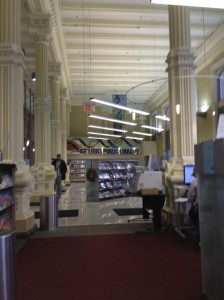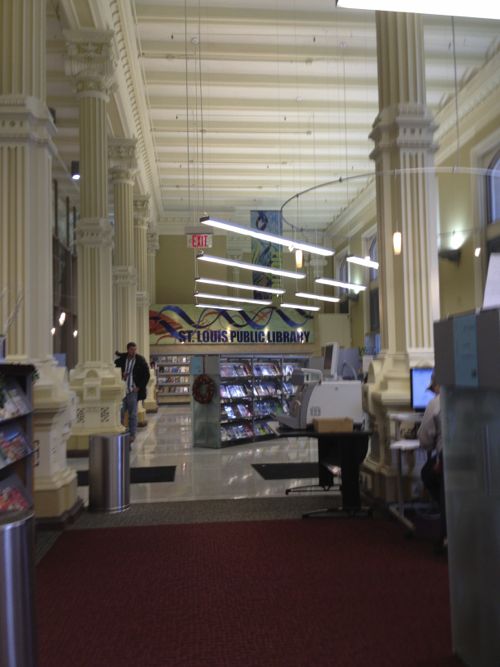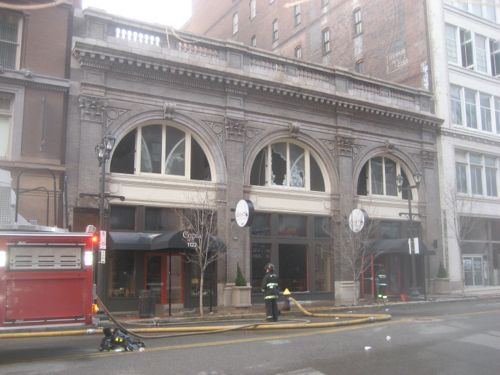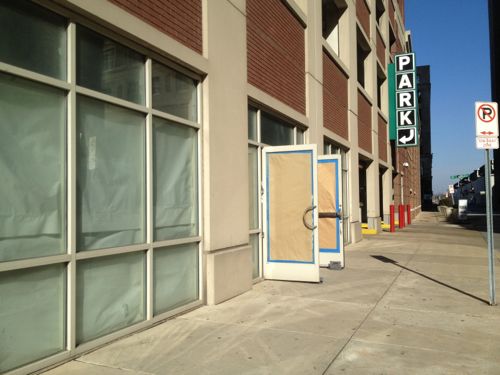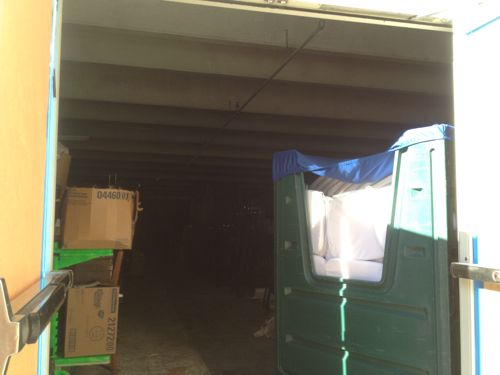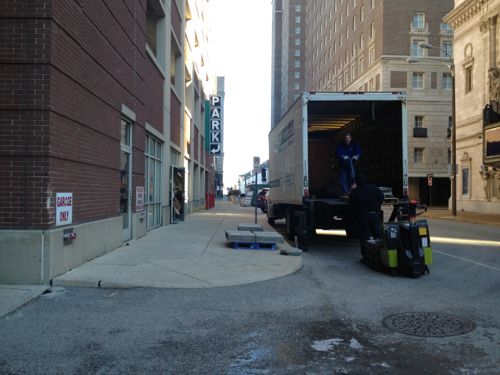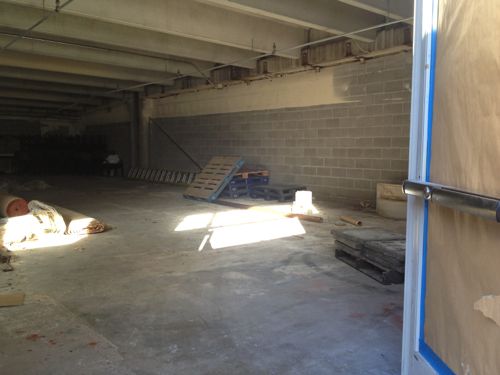Culturing Familiarity: Regional Perception and the City of St. Louis
Guest post by Kuan Butts
Murder, drugs, theft, car chases. In the three or so months since I left St. Louis to attend graduate school, much of what I have heard in reference to or from the Gateway City has circulated around danger and crime, particularly associated the urban core. Such news topics were not isolated to correspondence with those living in St. Louis currently. No, this reputation permeated everyday experiences. For example, during an introduction to GIS graduate course, the professor demonstrated an example of a “successful” final report for the semester; a project which happened to have mapped crime in relation to discovered meth labs and freeway onramps in, you guessed it, St. Louis, Missouri. While this did not pertain to the city center, per se, the thematic trends it presented were synonymous.
This information, of course, should come as no surprise to any who have lived in St. Louis. The City’s self-esteem issues have long been a source of both frustration and humor. An excellent example of this is any of the number or articles The Onion has produced. In one such article, published last year, they announced millions of new jobs had been created, but they were all located in St. Louis (implying that St. Louis was such an unappealing locale as to render these new jobs unattractive, even in such an economy). Many, including myself, wrote an angry comment or two, chastising the author for his cold attack on my city. Nonetheless, the popularity of the piece was clear, demonstrating a notion that was firmly entrenched in some national psyche regarding this “shrinking city,” and many others like it.
What concerns me most is the effect that some of these perceptions on the relationship of greater metropolitan regions with their urban core; particularly when the two are divided by political isolation. For example, the relationship occurring through the Zoo-Museum Tax District in St. Louis is an intriguing case study of this. The taxing entity covers a broad region, including much of St. Louis County in addition to the City of St. Louis. Created in 1971, the tax district demonstrates plainly the regional significance of such amenities – specifically that the Zoo is a zoo not just for those in St. Louis City and not just for those in Clayton. Rather, the Zoo is a cultural center whose benefits exist on a regional scale.
Simply, the Zoo and museums are broad ranging benefits, whose costs are born by those outside of the traditional taxation district in an attempt to recapture some of its positive externalities, seeking equity in the bearing of its costs. Applying this same logic to the civic core of St. Louis, it is striking to see how such a clearly regional asset (from its architecture to its history, entertainment capacities, judicial and governing functions, business environment, and convention infrastructure) can be provided and the costs born by such a small group of individuals. What creates the culture of entitlement, ownership, and thus stewardship in the case of the Zoo, that fails to occur in the downtown core of St. Louis? Conversely, does fiscal investment such as taxation, in itself, create this sense of possession?
I posit that one element of difference between these two locations is a “sense of persistence.” By the word “persistence,” I mean an attitude that, if one is not presently in the location, one’s social circle or someone with whom one identifies closely (be it through cultural similarities or racial composition) could very well be there at this moment. Just as many suburban neighborhoods operate through a Homeowner’s Association that unifies homogenous groups to care for a collective good, denizens of the St. Louis region feel a stewardship towards the Zoo, along with much of Forest Park, because there is a belief that those similar to you could very well be standing to gain should you not be using the services yourself at that particular moment. Thus, it would behoove you, the tax-payer, to contribute to the care of this amenity, preserving it for the greater good of yourself and those like you.
In the case of downtown, this same metric of cognition falls short due to its perceived brevity of occupation by those living in, for example, the suburbs. In many ways, St. Louis City is still stuck in a strange notion of the Instant City, as developed by Archigram, a London-based avante-garde architectural group from the 1960s. In this model, a city could be brought anywhere, even to the smallest town or village, carried by a blimp and set up almost instantaneously. The wonders of the city were provided and, once consumed, lifted up into the air, out of sight and mind. In St. Louis, the arrangement of peripheral cities exists in such a way as to have the benefits of a major city, taking in the qualities only substantive urbanity can provide, but ignoring it once such benefits have been acquired.
Such attitudes have fostered a quality of impermanence within the downtown core. Those same individuals who obtain a sense of stewardship of Forest Park or the Zoo often see downtown as a limited,programmed environment. Downtown is, to many, a place in which specific events occur and then end. It is almost as though the scheduling of such activities has the capacity to turn “on” and then “off” the existence of such a place and its setting.
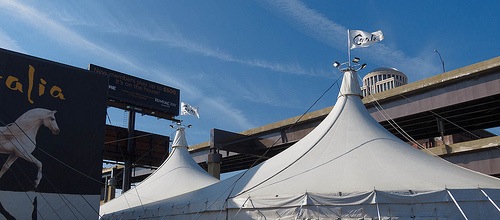
In many ways, the recent “Cavalia: A Magical Encounter Between Human and Horse” event space in downtown St. Louis is a physical manifestation of this attitude. What attitudes toward downtown development created the present environment, enabling such a large temporary structure to be erected? The singularity of structures, their lack of contextual design within the greater surroundings, is often targeted as the primary reason for retention failure post major events. While deficiencies in formal planning and urban design rightfully hold the fault for these failures, these accusations are often tired and played out. Physical alterations and plans for future build-out are costly and often long-range in scope. Furthermore, physical remediation of presently deficient urban environments can only achieve as much as the attractions which it services. If the amenities do not appeal to the targeted social groups, then the area may remain under-utilized.
While physical environments can significantly improve an experience, often the primary inhibitor of occupation in an environment is a damaging perception of what is there. Often, because of limited experience and interaction, distorted notions of places and those within it create apprehension or even repugnance towards the idea of such areas. In a simple example, consider the willingness of a stereotypical suburbanite to enter an aging strip mall and yet express hesitancy toward approaching an older urban structure. In presenting the urban environment as desirable to a population that has become unfamiliar with it, creating a sense of familiarity is key. Just as with Forest Park, the notion that “I” or someone like myself, can be in an environment at any time of the day, can have a very powerful effect on the behavior and investment patterns of a region. Unlike the programmed nature of major sporting events at Busch Stadium, for example, the notion of permanence in occupation, day in and day out, enables spontaneity. No longer is a scheduled activity (be it work or an event) necessary for one to feel “allowed” or for it to be “okay” to be in downtown. While the flexible nature of a park environment makes such an accomplishment much more easily accomplished in the case of a park, the same can still be achieved in an urban environment.
An additional advantage of culturing such an attitude is the ability to develop interest and occupation by a “desired” market sector without the displacement of those currently living in an environment. Because of the absence of major physical redevelopments, an environment can grow and infill organically, to meet both new demands as well as retain and continue to service old ones.
What methods can achieve this perception change? Clearly, the issue has now been framed perfectly for a marketing solution. Presently, a number of major marketing initiatives are already in place, ranging from an amenities-driven approach (Explore St. Louis by the St. Louis Convention and Visitors Commission) to a business development initiative (St. Louis is All Within Reach by the St. Louis Regional Chamber and Growth Association). The success or failure of these initiatives is not within the parameters of this essay, though. Rather, concepts for alternative methods of culturing familiarity need to be sought.
One such alternative attempt is currently being pursued by local St. Louis startup CityPulse. (Full disclosure: I was part of the Brain Drain collaborative team that developed this idea in early 2012 for the Good Ideas for Cities event hosted by the Contemporary Art Museum and GOOD Magazine.) In this case, a series of beacons placed strategically throughout the city sense pedestrian presence, which in turn activates a light feature, thus highlighting activity, Furthermore, every beacon is connected digitally and all are represented through a web portal. This web portal would, in addition, sync social media activity, linking geo-spatially tagged locations which allow observers to begin to connect pedestrian activity with individuals and interests. Ideally, such a mechanism could enable individuals to identify with areas they previously shouldered.
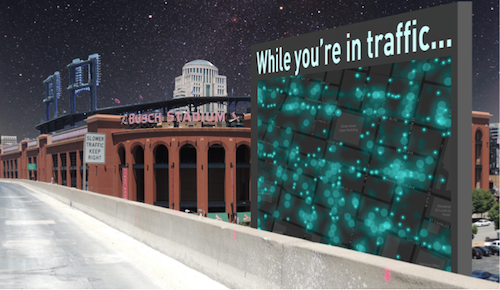
This solution is by no means the final answer, a perfect resolution for the observed problem. Rather, it begins to identify qualities that presently hinder current initiatives, such as those aforementioned. Specifically, creating data that is absolute and out of the control of any incentivized individual or organization’s control overcomes concerns of deception or biased curation by such groups. Ultimately, fostering that sense of permanence necessitates a neutral means of delivering data, presenting unpruned information that is easily consumable, but effectively highlighting the liveliness that already exists, “under the radar,” within numerous urban cores across the country.
—
Born and raised in San Diego, CA; Kuan Butts is currently a graduate student at MIT’s Department of Urban Studies and Planning, where he is focusing in City Design and Development. Prior to MIT, he worked at H3 Studio in St. Louis, MO after receiving a BS Architecture from Washington University in St. Louis, MO.
